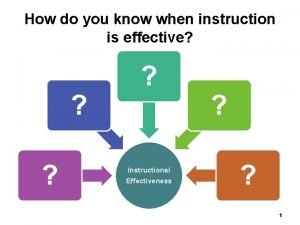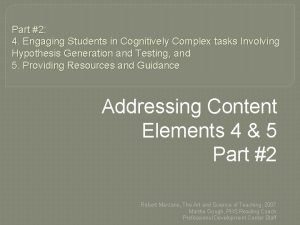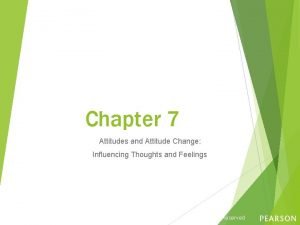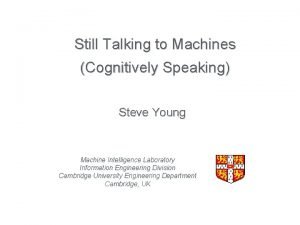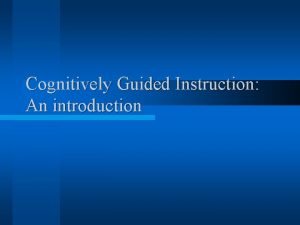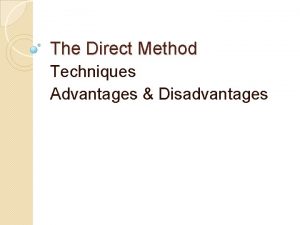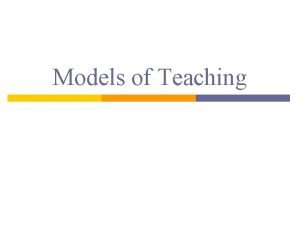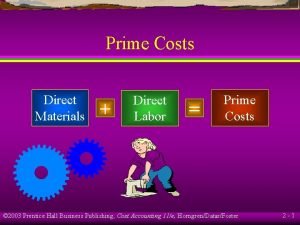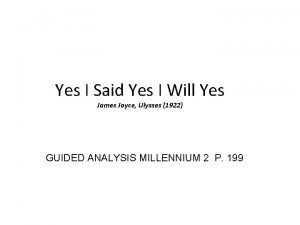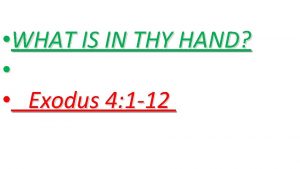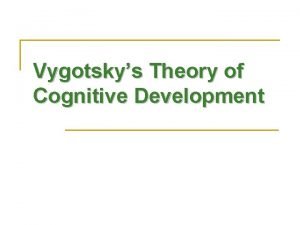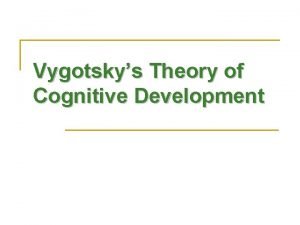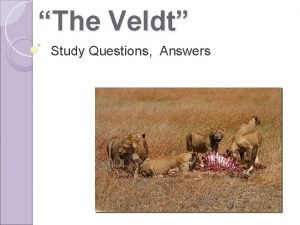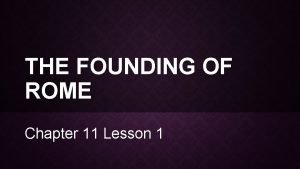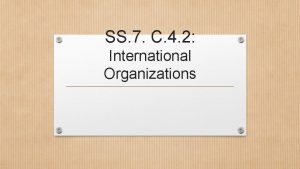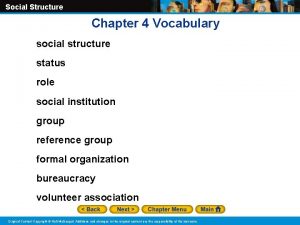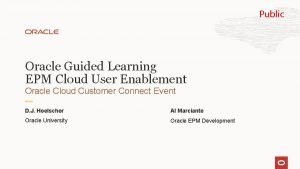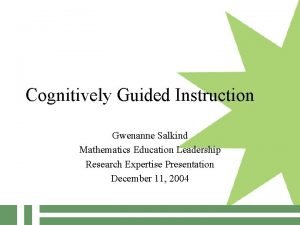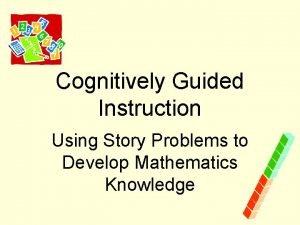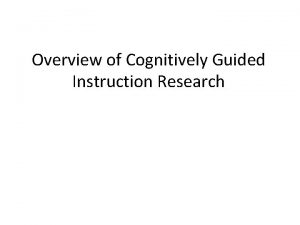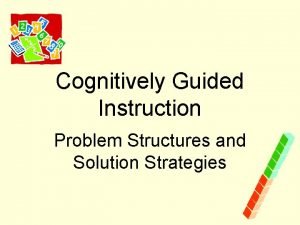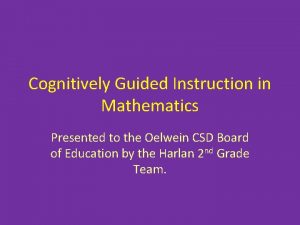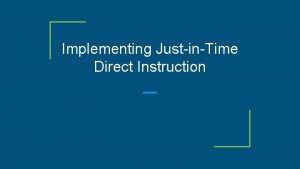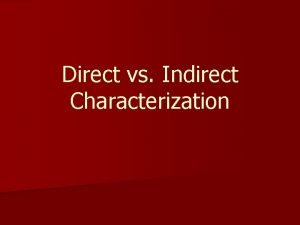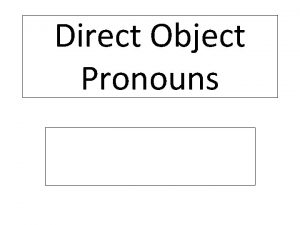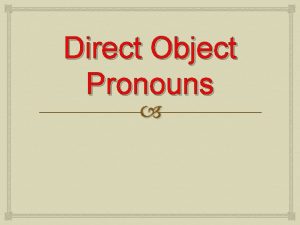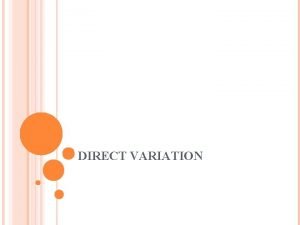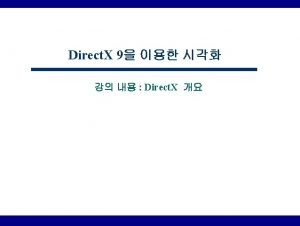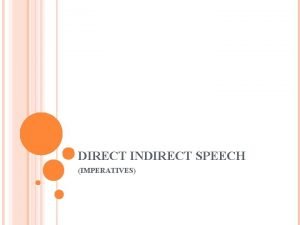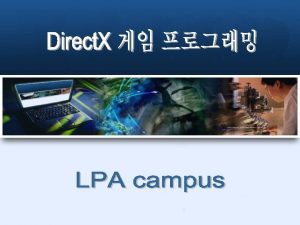Cognitively Guided Instruction An introduction Direct Instruction as



























- Slides: 27

Cognitively Guided Instruction: An introduction Direct Instruction as a Teaching Strategy Dr. Patty Chastain

Direct Instruction l l l Best used when there is factual information that students could not “discover” or develop on their own. Often starts with a pre-assessment Teacher gives information/lecture Students have some “guided practice” followed by independent practice Attainment of knowledge assessed to see change

Cognitively Guided Instruction (CGI) l A method of instruction, used especially for teaching arithmetic, based on: – knowledge of students’ current abilities; – usual cognitive development; – levels of difficulties of the tasks assigned Based on research by Thomas Carpenter and others l Assumes that children learn best when they figure things out for themselves, rather than being shown algorithms (“constructivism”) l

CGI basics, continued Students are presented with problems in context (I. e. , story problems) l Story problems vary in difficulty based on how they are worded. l Level of difficulty is determined through research into how young children approach the problem when they can count, but have not memorized any “math facts” or other strategies for doing addition, subtraction or other operations l

Direct Modeling: all numbers represented, number order and “verb” are important! Child draws or chooses counters to represent the first number in the problem. (e. g. Jen had 3 candies. Then she got 5 more. How many does Jen have now? ) l Then child draws or chooses counters to represent the second number. l The child physically moves the two groups together (or circles them, etc. ) and counts all, starting with 1. l

Word Problems That Involve Action to Direct Model

Join Problems (3 types) l Result unknown (JRU) l Example: Connie had 5 marbles. Juan gave her 8 more marbles. How many marbles does Connie have now? l Symbolized by 8+5= ?

Join Problems l Change unknown (JCU) l Example: Connie had 5 marbles. Juan gave her some more marbles. Now Connie has 13 marbles. How many marbles did Juan give her? l Symbolized by 8+? = 13

Join Problems l Start unknown (JSU) l Example: Connie had some marbles. Juan gave her 8 more marbles. Now Connie has 13 marbles. How many marbles did she start with? l Symbolized by ? +8= 13

Separate Problems (3 types) l Result unknown (SRU) l Example: Connie had 13 marbles. She gave 5 to Juan. How many marbles does Connie have left? l Symbolized by 13 -5= ?

Separate Problems l Change unknown (SCU) l Example: Connie had 13 marbles. She gave some to Juan. Now she has 5 left. How many marbles did she give to Juan? l Symbolized by 13 -? = 5

Separate Problems l Start unknown (SSU) l Example: Connie had some marbles. She gave 8 to Juan. Now she has 5 left. How many marbles did she start with? l Symbolized by ? - 8 = 5

Word Problems that Do Not Involve Action to Direct Model (2 kinds)

Part-Whole Problems (2 types) l Whole unknown (PPW-WU) l Example: Connie has 5 red marbles and 8 blue marbles. How many marbles does she have? l Symbolized by 5+ 8 = ?

Part-Whole Problems (also called Equalizing Problems) l Part unknown (PPW-PU) l Example: Connie has 13 marbles. 5 are red, and the rest are blue. How many blue marbles does she have? l Symbolized by 5+ ? = 13

Compare Problems (2 types) l Difference unknown (CDU) l Example: Connie has 13 marbles. Juan has 5 marbles. How many more marbles does Connie have than Juan?

Compare Problems l Compare quantity unknown (C-CQU) l Example: Juan has 5 marbles. Connie has 8 more than Juan. How many marbles does Connie have? l Symbolized (but not precisely) by 5+8=?

Assignment for next meeting l Briefly describe a children’s story book including author and appropriate age/grade. l Prepare a list of 6 different types of story problems based on that book. l On the back of your paper, identify what kind of problem each one is.

Story Problems from Literature: An example from a former student

EDUC 406 - Math Word Problems By Tefang Li

Contents Introduction of the story book Word Problems The End Click the house to read the contents

Old Mac. Donald Had a Farm Illustrated by Tracey English l Western Publishing Company l It’s a counting book. Each time when the song is repeated with a different animal, one more counting number is added. l At the end, it includes a full page of all the different animals and the counting numbers from 1 to 10. l Click here to go next

Word Problem Join Separate Part-Whole Compare

Join Type of Problems 1. Old Mac. Donald had 6 hens in the barn and then he bought 5 more hens. How many hens does he have altogether? (Result Unknown, JRU) 2. Old Mc. Donald had some pigs and his friend gave him 2 more pigs. Now he has 15 pigs. How many pigs did he have before he got the 2 new pigs from his friend? (Start Unknown, JSU)

Separate Type of Problems 1. Old Mc. Donald had 19 sheep. One day, he sold some of his sheep and then he had 11 sheep left. How many sheep did he sell? (Change Unknown, SCU) 2. There were some apples in a basket. The horse ate 3 of them and then there were 9 apples left. How many apples were in the basket in the first place? (Start unknown, SSU)

Part-Whole Type 1. Old Mc. Donald owned 21 horses. 4 of them were sleeping and the rest of them were eating. How many horses were eating? (Part unknown, PPW, PU) 2. Old Mc. Donald had some sheep. 7 were black sheep and 8 were white sheep. How many sheep did he have altogether? (Whole unknown, PPW, WU)

Compare Type 1. The horse on his farm ate 14 apples and the cow on his farm ate 6 apples. How many more apples did the horse eat? (Difference Unknown, CDU) 2. The sheep ate 9 apples, and the goat ate 5 more than the sheep. How many apples did the goat eat? (Compare quantity unknown, CCQU)
 Cognitively guided instruction
Cognitively guided instruction Disadvantages of cognitively guided instruction
Disadvantages of cognitively guided instruction Instructional effectiveness
Instructional effectiveness Cognitively demanding
Cognitively demanding Cognitively complex
Cognitively complex Cognitively based attitudes
Cognitively based attitudes Cognitively speaking
Cognitively speaking Central and peripheral routes to persuasion
Central and peripheral routes to persuasion § 367 abgb
§ 367 abgb Cognitive guided instruction
Cognitive guided instruction Differentiated instruction vs individualized instruction
Differentiated instruction vs individualized instruction Disadvantages of direct method of teaching english
Disadvantages of direct method of teaching english Direct expository approach
Direct expository approach Cooperative learning
Cooperative learning Direct material + direct labour
Direct material + direct labour Direct method is also called
Direct method is also called Conclusion paragraph format
Conclusion paragraph format And yes i said yes i will
And yes i said yes i will Thy hand o god has guided
Thy hand o god has guided Vygotsky motivation
Vygotsky motivation Guided participation vygotsky
Guided participation vygotsky The veldt questions worksheet
The veldt questions worksheet Guided reading lesson 1 the founding of rome
Guided reading lesson 1 the founding of rome Adolescents defenition
Adolescents defenition Trc reading
Trc reading Guided notes international organizations
Guided notes international organizations Social structure guided reading section 4
Social structure guided reading section 4 Oracle guided learning
Oracle guided learning


